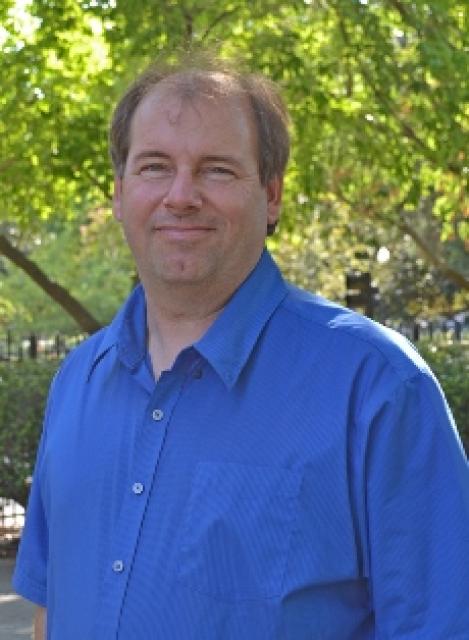Autumn 2021 California Project WET Gazette
Volume XXVl, Issue IV
The Humpty Dumpty Effect
Humpty Dumpty sat on a wall, Humpty Dumpty had a great fall; All the king’s horses and all the king’s men, Couldn’t put Humpty together again. ― Mother Goose
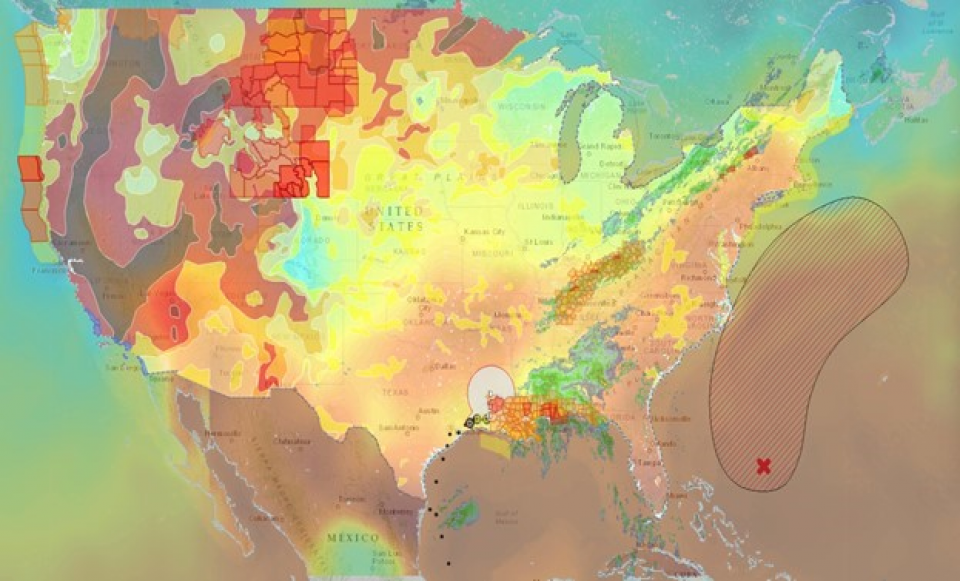 Somewhere around early August this old nursery rhyme began floating through my mind. The resurgence of COVID-19 infections certainly played a role. But it was watching the forces of fragmentation playing havoc around the world , with drought and hurricanes and floods all super-charged by climate change that hardboiled in my mind the thought of a splintering shell over the surface of an enormous egg. And sadly, all tied to the global sum of human choice and action on the individual and community scale.
Somewhere around early August this old nursery rhyme began floating through my mind. The resurgence of COVID-19 infections certainly played a role. But it was watching the forces of fragmentation playing havoc around the world , with drought and hurricanes and floods all super-charged by climate change that hardboiled in my mind the thought of a splintering shell over the surface of an enormous egg. And sadly, all tied to the global sum of human choice and action on the individual and community scale.
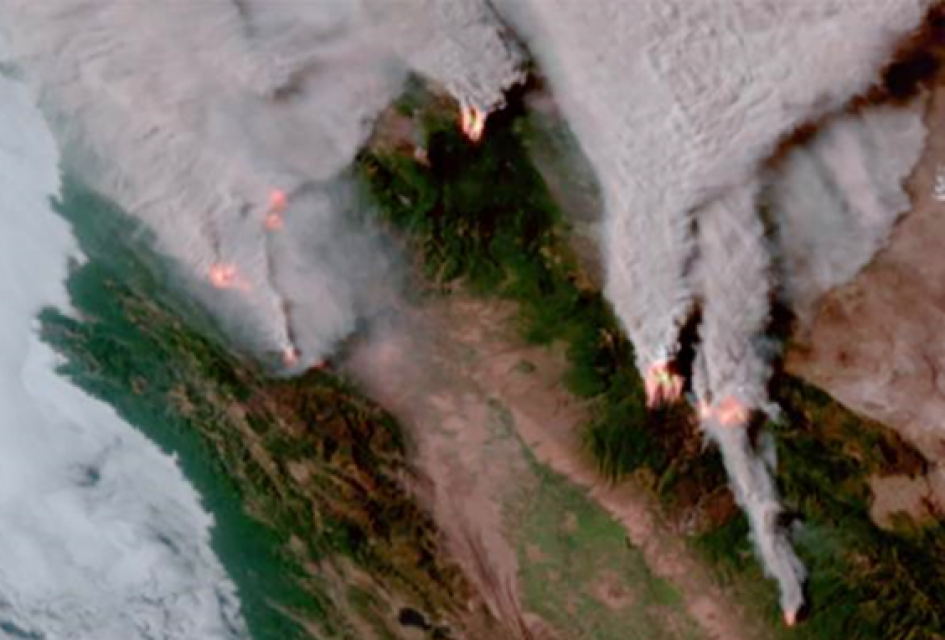 Don’t get me wrong. Mother Nature still controls the formation of hurricanes, tornadoes, cycles of flood and drought and all the other spontaneous conditions that lead to damaging weather events. But our abilities as a species to re-engineer entire landscapes and rely on fuels that unlock carbon and other greenhouse gases that have been within the Earth for hundreds of thousands of years have greatly increased the power of weather events, fires and related phenomena – as we have been watching play out again over the past year.
Don’t get me wrong. Mother Nature still controls the formation of hurricanes, tornadoes, cycles of flood and drought and all the other spontaneous conditions that lead to damaging weather events. But our abilities as a species to re-engineer entire landscapes and rely on fuels that unlock carbon and other greenhouse gases that have been within the Earth for hundreds of thousands of years have greatly increased the power of weather events, fires and related phenomena – as we have been watching play out again over the past year.
Much like Humpty Dumpty’s shell after falling off the wall, we have fragmented or eliminated ecosystems that we have been learning in hindsight provide far more than just the resources that were being sought when the damage was done. The loss of sediment and carving of shipping channels and pipelines damaged wetlands along the Gulf Coast, yet recent studies have shown these ecosystems are a buffer against stronger storm surges and rising sea levels due to warming of the planet.
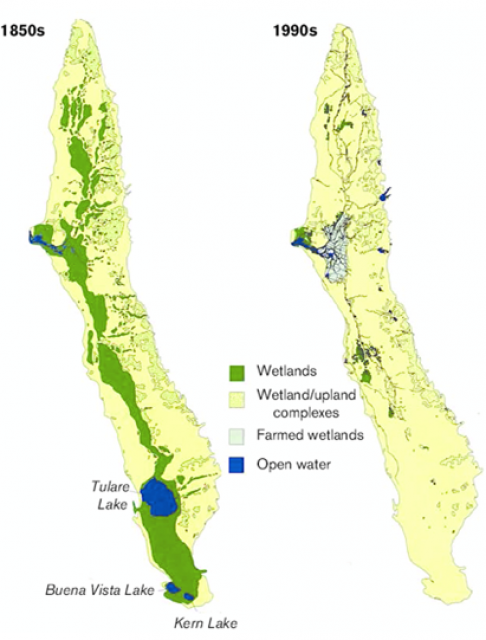 Another example is the floodplain ecosystems that once recharged Central Valley aquifers during floods. They provided habitat sustaining human and natural communities for millennia, including a vast array of waterfowl species that migrate along the Pacific Flyway. Nearly all were cut-off or eliminated in the belief that dams and levees alone could protect the urban infrastructure that expanded into these areas.
Another example is the floodplain ecosystems that once recharged Central Valley aquifers during floods. They provided habitat sustaining human and natural communities for millennia, including a vast array of waterfowl species that migrate along the Pacific Flyway. Nearly all were cut-off or eliminated in the belief that dams and levees alone could protect the urban infrastructure that expanded into these areas.
More intense storms and greater runoff from a warmer climate combined with aging levees, a major decline in species populations – from salmon to migratory waterfowl – and more research have been changing this philosophy over the past two decades. Dams and levees are being re-engineered to adapt management for future climate impacts. But it has become clear the restoration of floodplain ecosystems is needed to reverse declining species populations and increase climate resiliency of the Central Valley water system.
Similar restoration efforts are being implemented around the world in an attempt to restore that protective shell of ecosystem services that will be needed to blunt the impact of climate change and reverse the loss of biodiversity. In essence, we are trying to restore Humpty Dumpty’s shell after pushing him off the wall. But, even when we understand their parts, living systems are hard to put back together. This is the focus of the Project WET activity ‘Humpty Dumpty’ (p: 335).
 What would Humpty Dumpty have looked like if he could have been put back together again? The Project WET activity begins with this question and the dropping of a hard-boiled egg by the teacher. The intent is to develop the analogy to ecosystems, then offers options – from deconstructing old toys or clocks to rebuilding puzzles or small clay pots adorned with images of various ecosystems – to engage students in experiencing the complexity involved in restoring altered systems.
What would Humpty Dumpty have looked like if he could have been put back together again? The Project WET activity begins with this question and the dropping of a hard-boiled egg by the teacher. The intent is to develop the analogy to ecosystems, then offers options – from deconstructing old toys or clocks to rebuilding puzzles or small clay pots adorned with images of various ecosystems – to engage students in experiencing the complexity involved in restoring altered systems.
Teachers over the years have reported having wonderful class experiences with all the methods, but the option using the clay pots has been the most popular. Some teachers have also skipped the demonstration and dove right into having students drop hard-boiled the eggs and work in groups to try to put their egg back together again. Several used the directions for the clay pot option with the eggs, and most had a plan for not letting the eggs go to waste after class.
No matter which method is used, comparing the results and reflecting on how they may connect to restoring ecosystems can generate a deep discussion and questions among the class. Some may be able to fully restore their objects, some may not – and many will be able to reassemble, but with missing parts. These are the results that will generate questions at the core of ecosystem restoration debates today, such as: Can an ecosystem function well if it is missing parts? And can it be considered restored? Can the missing parts ever be replaced by nature? Are some parts more vital than others in the function of an ecosystem?
Some great activities to apply these questions to while expanding on student understanding of what is meant by ecosystem services include the Project WET Guide 2.0 activities ‘Snow & Tell’ (p: 387), ‘Blue River’ (p: 135), ‘Color Me a Watershed’ (p: 239),‘Get the Groundwater Picture’ (p: 143) or ‘Wetland Soils in Living Color’ (p: 217) and Guide 1.0 activities including ‘Salt Marsh Players’ or ‘Life in the Fast Lane.’ Each one focuses on the study of different ecosystems and the changes caused by humans and nature. They challenge students to consider options for lessening our human impact while continuing to benefit from the natural resources we need to survive.
“The last word in ignorance is the man who says of an animal or plant, “What good is it?” If the land mechanism as a whole is good, then every part is good, whether we understand it or not… To keep every cog and wheel is the first precaution of intelligent tinkering.”
― Aldo Leopold, A Sand County Almanac
Aldo Leopold went through this transition of human understanding of ecosystems. As a young forester in the Gila National Forest of New Mexico, his duties included eliminating wolves based on a belief that ‘[F]ewer wolves meant more deer, that no wolves would mean hunters’ paradise.’
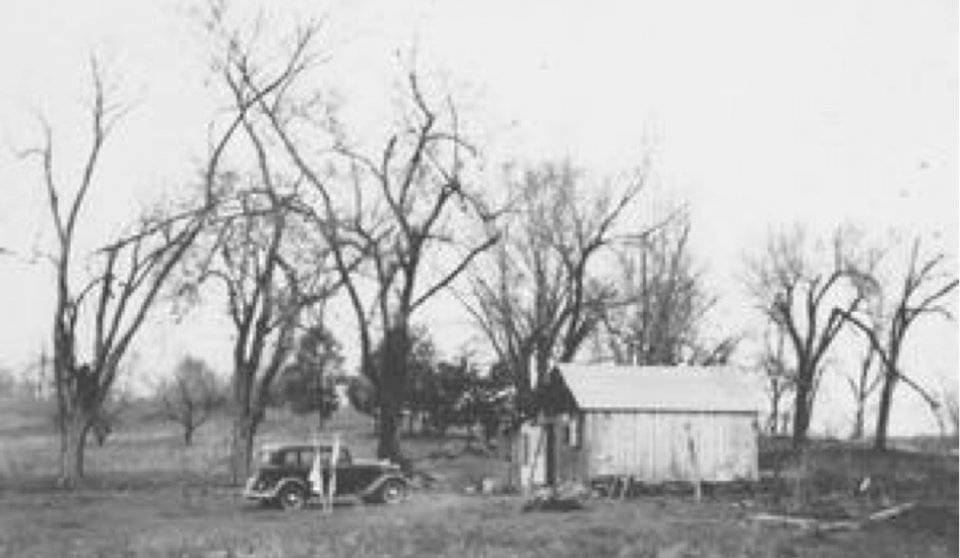 His view began to change over time as he began to notice a greater presence of diseased deer and other changes within the ecosystem with the elimination of wolves and this change continued as he began research into restoring ecosystem function to worn out land in the Sand County area of Wisconsin.
His view began to change over time as he began to notice a greater presence of diseased deer and other changes within the ecosystem with the elimination of wolves and this change continued as he began research into restoring ecosystem function to worn out land in the Sand County area of Wisconsin.
Leopold’s experience and quote also provide a cautionary note when discussing ecosystem restoration and management. The plight of a single species can be one indicator of ecosystem health and a way to gain public attention but it can be a recipe for disaster for other species with different needs if applied to every acre of an ecosystem. Creating the conditions for an ecosystem to meet the needs of all species is as important as every fragment found to restore Humpty Dumpty’s shell.
Like the differing size of the fragments or parts in rebuilding Humpty Dumpty’s shell, certain species can play a larger role in an ecosystem in a given time or space. But what if this was the only portion of shell that is restored? This can add more to a class discussion on missing parts and roles in nature we may not yet be aware of or understand. A great case study for the class to explore is the role California condors might play in redwood forests where they may be reintroduced this fall.
One could explore the potential consequences of managing for a single species rather than an ecosystem as a whole with Project WET activities such as ‘Macroinvertebrate Mayhem’ (p: 343), ‘Invaders’ (p: 263), ‘Water Address’ (Portal) or revisiting ‘Salt Marsh Players’ (Portal) or ‘Life in the Fast Lane’ (Portal). How might the function of an ecosystem change if it was managed or altered to solely meet the needs of any one species in these activities?
‘Humpty Dumpty’ concludes with students applying what they learn to investigate real-life examples. Each activity listed in this article is linked to current ecosystem challenges, arguments for and examples of ecosystem restoration projects and more can be found in the Websites of Interest section of this Gazette.
Restoration projects can be opportunities to engage entire classes, and students of all ages have been engaged in restoration projects ranging from planting trees to restore burned forests or building beaver dam analogs to restoring riparian habitat and collecting data to assess the health of ecosystems.
You’ll also find a variety of opportunities students can engage to help improve the health of California ecosystems in the Events and Student Contests sections of this Gazette – and potential funding in the School, Classroom & Teacher Grants.
Check out the upcoming Professional Development Opportunities and please consider sharing a Project WET training with colleagues or joining in a training yourself. On a final note, I just had to share one more quote from Aldo Leopold that I discovered while researching for this article. I’m sure secondary teachers in particular will have something to say about it!
“Nonconformity is the highest evolutionary attainment of social animals.”
― Aldo Leopold, ‘A Sand County Almanac’
PROFESSIONAL DEVELOPMENT OPPORTUNITIES
California Project WET Workshops
Join us this fall for Project WET workshop experiences that continue to support the work of educators through fun professional development experiences. Workshops this fall will feature a mix of ‘live’ online, go-at-your-own-pace online training with the hope in person sessions can resume in the new year as virus conditions allow.
Project Learning Tree Workshops
University of California Cooperative Extension partners with Project Learning Tree to deliver regular workshops for educators interested in using trees and forests as windows to the world. Trainings are offered to schools, teachers, parents, students and non-profit organizations for outdoor environmental education programs.
Classroom Aquarium Education Program
The Classroom Aquarium and Education Program (CAEP) is an excellent way for you to engage K-12 students by raising native fish in your classroom. CAEP fosters stewardship of natural resources by relating the effects of human activities on native fish in your local watershed.
Culturally Relevant Phenomena for Secondary Science Educators
This virtual professional learning series will focus on environmental literacy and climate change science with an aim to connect students with culturally relevant local phenomena, connect the Next Generation Science Standards (NGSS), Career Technical Education and California Environmental Principles and Concepts (EP&Cs). A stipend of $400 will be available to teachers who participate in all professional learning sessions and the activities. Substitute costs will also be reimbursed. Required books and materials will be provided.
Engage, Connect and Gather Together
The California Association of Science Educators is thrilled to offer two IN-PERSON Regional Events in Northern and Southern California, respectively. Join us on Saturday, October 16, 2021 for a full day of engaging professional development and networking as we gather face-to-face with like-minded peers in a COVID safe environment. There will be a social Happy Hour after each event, where attendees can relax, unwind and catch up with each other.
California Environmental Education Interagency Network (CEEIN)
The California Environmental Education Interagency Network (CEEIN) is a consortium of environmental educators representing state departments and partner organizations. CEEIN provides a forum for members to share resources, programs and materials with California schools and students of all ages. Educators can find professional learning experiences and participatory stewardship opportunities in environmental education and environmental literacy on CEEIN’s online calendar of events.
WEBSITES OF INTEREST
The National Water Dashboard presents real-time stream, lake and reservoir, precipitation and groundwater data from more than 13,500 USGS observation stations across the country. It also shows NOAA weather data such as radar, watches and warnings, past precipitation totals, precipitation forecasts and drought conditions from other open water-data sources allowing anyone to observe and track extreme water and weather events as they occur across that nation in real-time.
Article: ‘The Humpty-Dumpty Problem’
Anyone who has tried to repair a piece of equipment knows the dangers of taking something apart without paying careful attention to the process. If a given gear can only mesh with a small number of other components, and a given spring fits only on a single stem, the parts do encode the whole. This is why a good clock maker could probably put a clock back together—even one she has never seen before—if all of the parts were laid out in front of her. But living systems are not really clocklike in their assembly, and organisms are not really machines.
Article: ‘Why an Ecotone is not a Mangrove’
We cannot study an ecosystem broken into components. It cannot be assembled into a whole. I call this the Humpty Dumpty Effect… We cannot successfully manage ecosystems or landscapes in a fragmented way. Managers must learn to integrate. The problem is that in nature the parts in isolation behave in different ways than when they are part of a whole. So it is not an easy job to go from parts to whole.
Article: “Climate change will mean more multiyear snow droughts in the West”
Snowpack is a critical resource in the western U.S. and Canada. Snow melts and runs off in spring and summer, when cities, farms and forests need water. Multiyear snow droughts are akin to drawing down a bank account for some of these important systems.
Article: “First the snow vanished, then the mudslides began”
A brutal summer of record heat and punishing drought has claimed yet another California victim: the majestic, snow-covered slopes of Mt. Shasta. The disappearance of Mt. Shasta’s snowpack has also hastened the melting of mountain glaciers, unleashing thunderous torrents of mud, boulders and trees that have destroyed bridges, made roads impassable and threatened water infrastructure.
Article: ‘4 Reasons Meadow Restoration is Good For All of Us’
Meadows are often the subject of beautiful photographs and paintings but beyond their beauty, meadows provide important services to people and wildlife. “Meadows are a great form of green infrastructure. They clean our air, contribute to a reliable water supply and provide essential habitat for wildlife.” said Ian Vogel, a wildlife biologist in the U.S. Fish and Wildlife Service’s Sacramento Field Office.
In California, where prolonged drought and warmer climates have increased the prevalence, severity, and duration of wildfires, the threat of wildfire is no longer restricted to a single season, but rather a year-round hazard. Wildfires pose considerable risks to water quality and quantity, which in turn affect water supplies, fisheries, and aquatic habitats.
Article: “Restoring California’s forests to reduce wildfire risks will take time, billions of dollars and a broad commitment”
Many of California’s 33 million acres of forests face widespread threats stemming from past management choices. Today the U.S. Forest Service estimates that of the 20 million acres it manages in California, 6-9 million acres need to be restored. Forest restoration basically means removing the less fire-resistant smaller trees and returning to a forest with larger trees that are widely spaced.
Article: “Battered, burned but alive: Time will heal park’s wounds, but it needs big money, too”
Ravaged by wildfire last summer, a state park — and all its redwood forests, creatures and trails — will undergo a transformation. But what will it look like? In the annals of California history, no one has ever had to put a broken state park back together. There’s no guidebook, no rules. So now conservationists and state officials and are attempting a complex and extraordinary Humpty Dumpty project: The reawakening of Big Basin Redwoods State Park.
Article: “A Visual Journey: Restoring California’s Floodplains”
The 2017 Central Valley Flood Protection Plan Update embraces a dramatically different “multi-benefit” flood management approach. This approach recognizes that by reconnecting floodplains and expanding floodways and flood bypasses, we can reduce flood risk to people and property while providing including habitat for fish and wildlife, improved recreational opportunities, groundwater recharge, and improved water quality, to name a few. Check-out the story map link!
Coastal Wetlands: Too Valuable to Lose
Coastal wetlands are some of the most productive ecosystems on Earth. They are crucial for healthy estuaries, which generate approximately half of commercially harvested seafood in the United States. Natural wetlands in coastal and riverine floodplains absorb floodwaters by acting as a natural sponge. Wetlands can lower overall flood heights, protecting people, property, infrastructure, and agriculture from devastating flood damages.
California EcoRestore is a multi-agency initiative launched in 2015 to advance at least 30,000 acres of critical habitat restoration and enhancement in California’s Central Valley including the Sacramento-San Joaquin Delta (Delta), Suisun Marsh, and Yolo Bypass region. The EcoRestore initiative was built on the assertion that cutting-edge science, strong partnerships, and a healthy impatience could drive more restoration than had ever been pursued in the Delta.
The STRAW Program is combating climate change with every restoration project it takes on. STRAW (Students and Teachers Restoring A Watershed) is a collaborative network of students and teachers leading their communities to restore their local ecosystems. STRAW empowers communities to heal the land, revitalize habitats, generate cleaner water, sequester carbon, empower children, train teachers, and inspire the conservation leaders.
The Student and Landowner Education and Watershed Stewardship (SLEWS) engages students and teachers in real environmental projects where students can hone scientific practices such as asking scientific questions, analyzing and interpreting data, and constructing explanations, while exploring ecosystem interactions. SLEWS provide learning experiences for students where they can develop science skills and work alongside science professionals.
TreePeople engages, supports and empowers students, teachers and communities with knowledge, skills, and understanding of the environment and partners alongside them to take action through hands-on meaningful projects. TreePeople has nearly 50 years of leading-edge resources and education material for you to learn from and take action. Transform your community with our handy videos, project kits and downloadable resources. Check out our blog to learn more about our work.
California Association of Resource Conservation Districts
The California Association of Resource Conservation Districts (CARCD) Education Committee makes information available to Resource Conservation Districts (RCDs) that wish to enhance their education and outreach to K-12 students who are interested in natural resource management and agricultural issues.
We provide a variety of resources to K-12 educators – including parents – to encourage water education in and out of the classroom. Our free supplementary materials can be used to help learn about California’s diverse water resources. Additional resources including links to real-time data, online games, and local agency programs are also available on our website. Check out our ‘Water Wednesdays’ You Tube page for recording of our weekly conversations with DWR researchers on a range of water topics.
AUTUMN EVENTS
September 1 – 30, 2021: National Preparedness Month
National Preparedness Month (NPM) is an annual observance to raise awareness about the importance of preparing for natural disasters and emergencies that could happen at any time. The 2021 event theme is “Prepare to Protect. Preparing for disasters is protecting everyone you love.”
September 18, 2021: California Coastal Cleanup Day
Trash travels through storm drains, creeks, and rivers to become beach and ocean pollution. Join the fight to help clean the beach by picking up litter in your community. Cleaning your neighborhoods, local parks, streets, and storm drains helps protect our coast!
September 23-25, 2021: Virtual California Agriculture in the Classroom Conference
We are so excited to collaborate and share California agriculture with all of you, virtually! California agriculture is diverse—producing everything from vegetables, to milk, to fruits and nuts, and to field crops and livestock. Teaching students about the journey their food and fiber undergoes from the farm to their everyday lives is an important message. We look forward to your registration!
September 25, 2021: Free Entrance Days in the National Parks
Established in 1994 and held annually on the fourth Saturday in September, National Public Lands Day is traditionally the nation’s largest single-day volunteer effort. It celebrates the connection between people and green space in their community, inspires environmental stewardship, and encourages use of open space for education, recreation, and health benefits.
September 25, 2021: National Public Lands Day
In 2020, we were thrilled to introduce virtual events celebrating our public lands and complementing many socially distanced in-person events. We are currently working with our federal, state, and local partners to monitor the situation to ensure a safe and enjoyable NPLD for everyone – whether virtually or in-person. Click here for the latest updates!
September 25, 2021: Oroville Salmon Festival
Each year the Oroville Salmon Festival celebrates the return of the salmon to the Feather River. This family-friendly event has some extra additions for 2021 only. Oroville’s annual May Feather Fiesta Days had to be partially rescheduled due to COVID-19 restrictions, so for this year only, the Salmon Festival is welcoming the rescheduled Car Show and Lott Home Craft Faire.
October 8 – 10, 2021: California Science Education Conference
Join us virtually for high–quality virtual workshops and courses led by educators and experts, hear motivational speakers and gain practical knowledge to be the best science educator. The California Science Education Conference provides unique and engaging opportunities to share with and learn from other educators and network with others throughout California and beyond!
October 10 - 16, 2021: Earth Science Week 2021
Celebrate the theme “Water Today and for the Future.” As this year’s event focuses on learning how to understand, conserve, and protect water – We will feature learning resources and activities to engage people of all backgrounds, ages, and abilities in exploring the importance of water, water science and water’s role in timely topics focused on perhaps Earth’s most vital resource.
October 21 – 23, 2021: California STEAM Symposium
The 2021 virtual California STEAM Symposium will be in partnership with the California Department of Education’s Expanded Learning Division and the California AfterSchool Network. This exciting partnership builds on our community belief STEAM learning happens everywhere and at any time of the day. Throughout the event we will explore opportunities for collaboration between community-based organizations and the TK-16 system.
October 23-30, 2021: California Flood Preparedness Week
Floods are as much a part of the California water cycle as drought. The California Department of Water Resources (DWR) and its Silver Jackets partners are preparing for Flood Preparedness Week 2021 (#CAFloodPrepWeek). Visit our website to learn more about flood preparedness and check out our webpage for education and outreach materials. Learn about Sacramento Valley Flood History by watching this Fall 2020 Water Wednesday webinar and find other Water Wednesday webinars on the DWR YouTube channel.
November 11, 2021: National Parks Free Entrance Day
Many national parks have direct connections to the American military—there are dozens of battlefields, military parks and historic sites that commemorate and honor the service of American veterans. In addition, every national park is part of our collective identity that defines who we are and where we came from as a nation. The National Park Service invites all visitors to remember our veterans by visiting any National Park Service site for free on Veterans Day.
SCHOOL, CLASSROOM & TEACHER GRANTS
Literacy for Life Grants - Due: October 1, 2021
Literacy for Life grants are designed to help initiate new projects or expand existing ones that promote agricultural literacy. Grants of up to $500 are provided to California K-12 educators to support integration of agriculture into regular classroom instruction. Explore the list of project ideas and read how previous recipients have used this funding to improve agricultural learning opportunities on their campuses.
Toshiba America Foundation K-5 Grant – Due: October 1, 2021
Do you have a new idea for improving STEM (Science, technology, engineering and math) learning in your classroom? Is your idea project-based with measurable outcomes? What do you need to make learning math and science fun for your students? K-5 grade teachers are invited to apply on-line for a $1,000 Toshiba America Foundation grant to help bring an innovative hands-on project into their classroom.
Toshiba America Foundation 6-12 Grant – Due: November 1, 2021
Do you teach in a middle and high school classroom and have an innovative idea for improving STEM (Science, technology, engineering and math) learning in your classroom? Sixth to 12th grade teachers are invited to apply on-line for a Toshiba America Foundation grant of up to $5,000 to help bring an innovative project into their classroom.
WHALE TAIL® Grants - Due: November 5, 2021
WHALE TAIL® grants support experiential education and stewardship of the California coast and its watersheds. Projects must relate to the coast and ocean. We strongly encourage projects that engage communities that have historically received fewer opportunities for coastal and marine education and stewardship, and applicant organizations based in the communities they are engaging.
Walmart Community Grant Program - Due: December 31, 2021
Our local community grants are awarded through an open application process and provide funding directly from Walmart and Sam’s Club facilities to local organizations in the U.S, including K-12 public, nonprofit private schools, charter schools, community/junior colleges, state/private colleges; or a church or other faith-based organization with a proposed project that benefits the community at large. Don’t know how to determine your local facility? Don’t worry, the application will assist you!
STUDENT CONTESTS
Campus RainWorks Challenge - Register by: October 1, 2021
The Campus RainWorks Challenge is open to institutions of higher education across the United States. Teams that compete are asked to design an innovative green infrastructure project for their campus that effectively manages stormwater pollution and also provides additional benefits to the campus community and environment. Complete entries must be received by December 10, 2021.
Earth Science Week Photography Contest - Due: October 15, 2021
We can see water everywhere and contest photographs should focus on the theme “Water as a Resource in My Community.” What are some of the special ways that people use, or are impacted by, water? With your camera, capture an image of the ways water is an important part of life in your community. The photography contest is open to interested persons of any age.
Earth Science Week Visual Arts Contest - Due: October 15, 2021
Consider your daily life. What are the ways you use water? How does water shape your life? What impact do you have on water? Use your creative ability to produce an original work of art focused on the theme “Water and Me” is the 2021 visual arts contest theme, open to grade K-5 students.
Earth Science Week Essay Contest - Due: October 15, 2021
“How We Understand, Use, and Protect Water” is the 2021 theme for the essay contest, which is open to students in grades 6 through 9. As individuals and as a society, we make important decisions about water that touch on issues such as energy, climate change, the environment, natural hazards, technology, conservation, recreation, agriculture, and industry and the economy. How can we use water as a natural resource in ways that support sustainable practices?
Earth Science Week Video Contest - Due: October 15, 2021
The American Geosciences Institute invites individuals and teams to enter the video contest Your 30 to 90 second video should focus on the theme “Water Is Part of Life Around the World” exploring the many ways people interact with water, perhaps our most vital natural resource! The contest is open to individuals or teams of interested persons of any age in any part of the world.
Imagine This…Story Writing Contest - Due: November 1, 2021
California students in grades 3-8 creatively explore where their food comes from by writing narratives to develop real or imagined experiences or events based on accurate information about California agriculture. The winning stories from each grade are illustrated by high school art students and published in our annual story book, Imagine this… Stories Inspired by Agriculture!
River of Words Youth Contest – Due: December 1, 2021
The River of Words Youth Poetry and Art Contest contest is free and open to enrolled K-12 grade students, ages 5-19. Students may enter on their own, through your school or youth organization. All art or poetry must be original work and students can enter as many times as they like. We will launch our online submission tool soon.
Caring for Our Watersheds Contest - Due: January 28, 2022
The Caring for Our Watersheds contest challenges students to research their local watershed, identify an environmental concern and come up with a realistic solution. The California contest is open to all 9th-12th grade students who live in Yolo, Solano, Sacramento, Colusa, Yuba, Sutter, Glenn, El Dorado, Placer, and San Joaquin counties. Contact Beth Del Real at (530) 795-1544.
CREDITS
California Project WET Gazette is published by the Water Education Foundation, which serves as the state coordinator and host institution for Project WET USA, a program of the Project WET Foundation.
This material is based upon work supported by the U.S. Geological Survey under Cooperative Agreement # GG1AC10429. The views and conclusions contained in this document are those of the authors and should not be interpreted as representing the opinions or policies of the U.S. Geological Survey. Mention of trade names or commercial products does not constitute their endorsement by the U.S. Geological Survey.
Editor: Brian Brown, California Project WET Coordinator
Water Education Foundation
2151 River Plaza Drive, Suite 205
Sacramento, CA 95833
916.444.6240
Internet: www.watereducation.org
email: projectwet@watereducation.org









